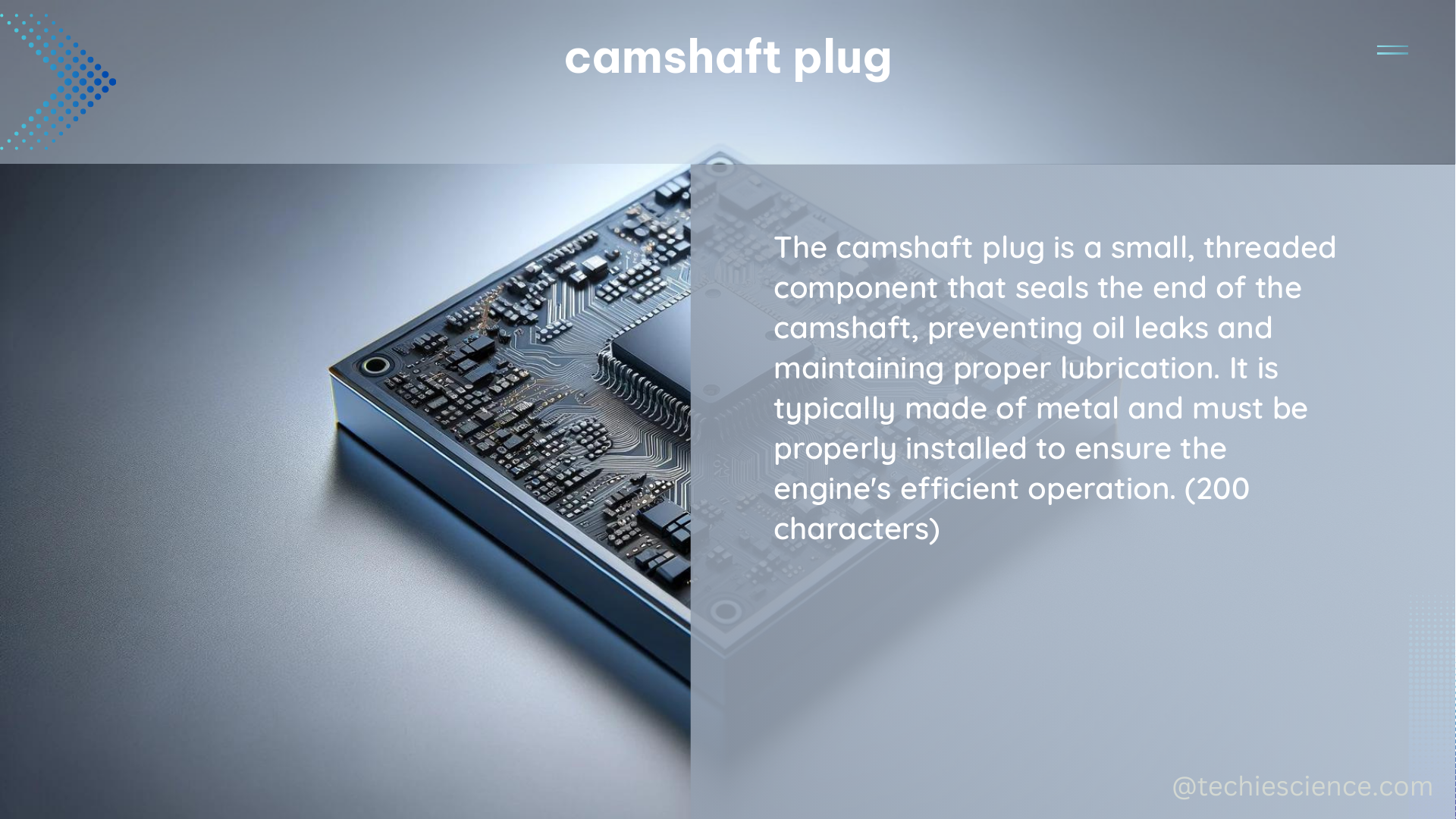Camshaft plugs are critical components in an internal combustion engine, responsible for sealing the camshaft to prevent oil leaks and maintain the required pressure within the engine. These plugs are typically made of metal and feature an O-ring to ensure a proper seal. The size of a camshaft plug can vary, but it is often about the size of a quarter, as mentioned in forum posts.
Understanding Camshaft Plug Specifications
In terms of technical specifications, Fel-Pro offers camshaft plugs with specific part numbers, such as TCS45979 and ES72476, which can be found on O’Reilly Auto Parts’ website. These plugs are designed to fit specific makes and models, ensuring a proper fit and seal.
| Part Number | Compatibility |
|---|---|
| TCS45979 | Fits various GM, Ford, and Chrysler engines |
| ES72476 | Fits various Subaru, Toyota, and Nissan engines |
The material composition of camshaft plugs can also vary, with some being made of aluminum, brass, or steel, depending on the engine’s requirements and the manufacturer’s specifications. The choice of material is crucial, as it can affect the plug’s durability, resistance to corrosion, and ability to withstand the high temperatures and pressures within the engine.
Replacing Camshaft Plug O-rings

When it comes to replacing a camshaft plug’s O-ring, it is essential to use the correct size and material to maintain the seal’s integrity. The O-ring size is typically specified by the engine manufacturer and can be found in the vehicle’s service manual or by consulting with a professional mechanic.
In the case of a Kawasaki Vulcan 900 custom, the plug is pressed in, making removal and replacement more challenging. However, with the right tools and techniques, it is possible to replace the O-ring and stop an oil leak.
To replace the O-ring on a pressed-in camshaft plug, follow these steps:
- Locate the camshaft plug and carefully remove any surrounding components to access it.
- Use a small pick or pry tool to gently remove the old O-ring, taking care not to damage the plug or the camshaft surface.
- Clean the plug and the camshaft surface thoroughly, removing any dirt, debris, or old sealant.
- Apply a small amount of engine oil or silicone-based lubricant to the new O-ring.
- Carefully install the new O-ring, ensuring it is seated properly in the groove.
- Reinstall the camshaft plug, using a suitable tool to press it back into place.
- Reattach any surrounding components and check for proper seal and oil leaks.
Considerations for Subaru Outback Engines
For those working on Subaru Outback engines, it is essential to consider whether the rear camshaft plugs need to be replaced and if sealant should be applied during reinstallation. The answer to these questions will depend on the condition of the plugs and the specific engine requirements.
Subaru Outback engines are known to have a common issue with rear camshaft plug leaks, which can lead to oil consumption and potential engine damage if left unaddressed. When replacing the rear camshaft plugs, it is recommended to use a high-quality, silicone-based sealant, such as Permatex Ultra Grey RTV Silicone Gasket Maker, to ensure a proper seal and prevent future leaks.
Conclusion
In summary, camshaft plugs play a crucial role in maintaining the proper function and longevity of an internal combustion engine. Paying close attention to the technical specifications, size, and material of these plugs is essential to ensure a proper fit and seal. When replacing O-rings or reinstalling camshaft plugs, using the correct tools, techniques, and sealant is vital to prevent oil leaks and maintain engine performance.
Reference:
– Fel-Pro Camshaft Plug TCS45979
– Fel-Pro Camshaft Plug ES72476
– Kawasaki Vulcan 900 Custom Cam Plug O-ring Replacement
– Subaru Outback Rear Camshaft Plugs Questions
– Permatex Ultra Grey RTV Silicone Gasket Maker

The lambdageeks.com Core SME Team is a group of experienced subject matter experts from diverse scientific and technical fields including Physics, Chemistry, Technology,Electronics & Electrical Engineering, Automotive, Mechanical Engineering. Our team collaborates to create high-quality, well-researched articles on a wide range of science and technology topics for the lambdageeks.com website.
All Our Senior SME are having more than 7 Years of experience in the respective fields . They are either Working Industry Professionals or assocaited With different Universities. Refer Our Authors Page to get to know About our Core SMEs.